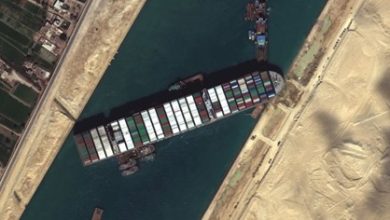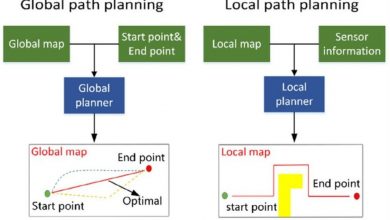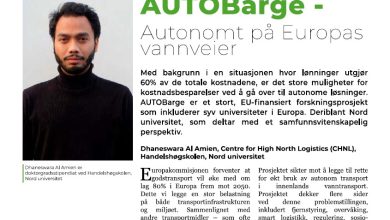Ship Intention Modeling for Trajectory Prediction of Target Vessels

Background
Waterway transport is frequently viewed as an eco-friendly alternative for reducing road congestion, as its emissions are considerably lower than those of road transport. However, one of the key obstacles to its broader adoption is the high operational cost, particularly crew wages. To address this issue, efforts to increase automation in maritime shipping have been ongoing for several years. Despite this, there are still major challenges before Maritime Autonomous Surface Ships (MASSs) can operate fully autonomously. A crucial challenge is the development of reliable collision avoidance systems that can safely navigate in the presence of both autonomous and traditional vessels, while adhering to maritime traffic regulations, specifically the Convention on the International Regulations for Preventing Collisions at Sea (COLREGs).
Problem Statement
One of the challenges in designing a collision avoidance algorithm for an autonomous vessel is predicting the trajectories of other vessels. These trajectories cannot be accurately forecasted without considering the vessels’ underlying intentions. COLREGS rules offer limited assistance in this situation because they are somewhat ambiguous, leaving room for the experience and judgment of skippers to shape how situations are interpreted. For example:
-
- COLREGS Rule 8(a): Any action taken to avoid collision shall be in accordance with the Rules of this Part and, if circumstances allow, should be positive, taken in ample time, and with due regard for good seamanship.
- COLREGS Rule 8(d): Action taken to avoid collision with another vessel shall ensure passing at a safe distance.
The terms ‘ample time’ and ‘safe distance’ are not explicitly defined in COLREGS. The intended ‘ample time’ and ‘safe distance’ of a vessel directly influence the trajectory the target vessel is likely to take.
Solution (State-of-the-art)
How does an autonomous vessel model and quantify such intentions to enhance decision-making in the event of a collision risk? Rothmund et al. [1] propose a Dynamic Bayesian Network (DBN) to address this issue. Figure 1 illustrates the latest iteration of the topography of a section of the intention model.

Figure 1: Graphical depiction of the proposed DBN’s structure for a single ship encounter [2]
The DBN model takes the perspective of a single ship, which will be called the reference ship, and models its relation to all other ships in the area. To model multiple ships, the DBN must be repeated for each ship. The index i will be used to identify the other ships in the area moving forward. The following underlying intentions are modeled:
-
- What time until CPA the reference ship considers ample time.
- Whether the reference ship intends to be COLREGS-compliant when performing evasive maneuvers.
- What COLREGS situation the reference ship thinks it has towards ship i.
- Whether the reference ship acts according to good seamanship.
- Whether the reference ship acts as if it has a lower or higher priority towards ship i.
- What distance at CPA the reference ship considers a risk of collision.
- How far in front of a ship the reference ship considers a crossing as risky.
- What the reference ship considers a safe distance at CPA.
- How far in front of a ship the reference ship considers a crossing as safe.
- What the reference ship considers a safe distance at CPA to the current midpoint.
- At what distance the reference ship considers that the situation starts.
- Whether the reference ship acts in an unmodeled way.
These intentions are represented as nodes in the DBN, each with discretized states. For instance, the intention of whether the reference ship intends to comply with COLREGS while performing evasive maneuvers can be represented as a binary node with states ‘True’ or ‘False’. The DBN model then incorporates various measurements derived from the vessel’s sensor data, including the current position, course, and speed of both the reference vessel and nearby vessels, through a set of measurement nodes. Finally, the model outputs a probability distribution for the intention nodes, assigning a probability to each node for being in a particular state. Furthermore, the proposed methodology outlines how to assess the alignment of a probable trajectory of the reference vessel with the calculated intention probabilities mentioned above. This approach enables the prediction of each vessel’s trajectory.
Latest Developments
Since the initial proposal of this methodology, several research studies have been conducted to verify the applicability of the algorithm in real autonomous collision avoidance situations. The author of the original paper performed a simulation study using historical Automatic Identification System (AIS) data, which yielded positive results [3]. In another study, Tengesdal et al. [2] applied the model in a collision avoidance algorithm and validated its effectiveness in a real-time experimental setting.
Future Work
There are many potential research questions that can be addressed in future work:
-
- Scalability in terms of the number of vessels that can be applied to simultaneously.
- Scalability in terms of the number of time slices per collision encounter.
- Effect of grounding hazards towards vessel intentions.
- Incorporating planned route information in the model.
An article by Dhanika Mahipala.
References
- S. V. Rothmund, T. Tengesdal, E. F. Brekke, and T. A. Johansen, “Intention modeling and inference for autonomous collision avoidance at sea,” Ocean Engineering, vol. 266, p. 113080, Dec. 2022.
- T. Tengesdal, S. Rothmund, E. Basso, H. Schmidt-Didlaukies, and T. Johansen, “Obstacle Intention Awareness in Automatic Ship Collision Avoidance: Full-Scale Experiments in Confined Waters,” Field Robotics, vol. 4, no. 1, pp. 211–245, Jan. 2024.
- S. V. Rothmund, H. E. Haugen, G. D. Veglo, E. F. Brekke, and T. A. Johansen, “Validation of ship intention model for maritime collision avoidance control using historical AIS data,” in 2023 European Control Conference (ECC), Jun. 2023, pp. 1–8.





